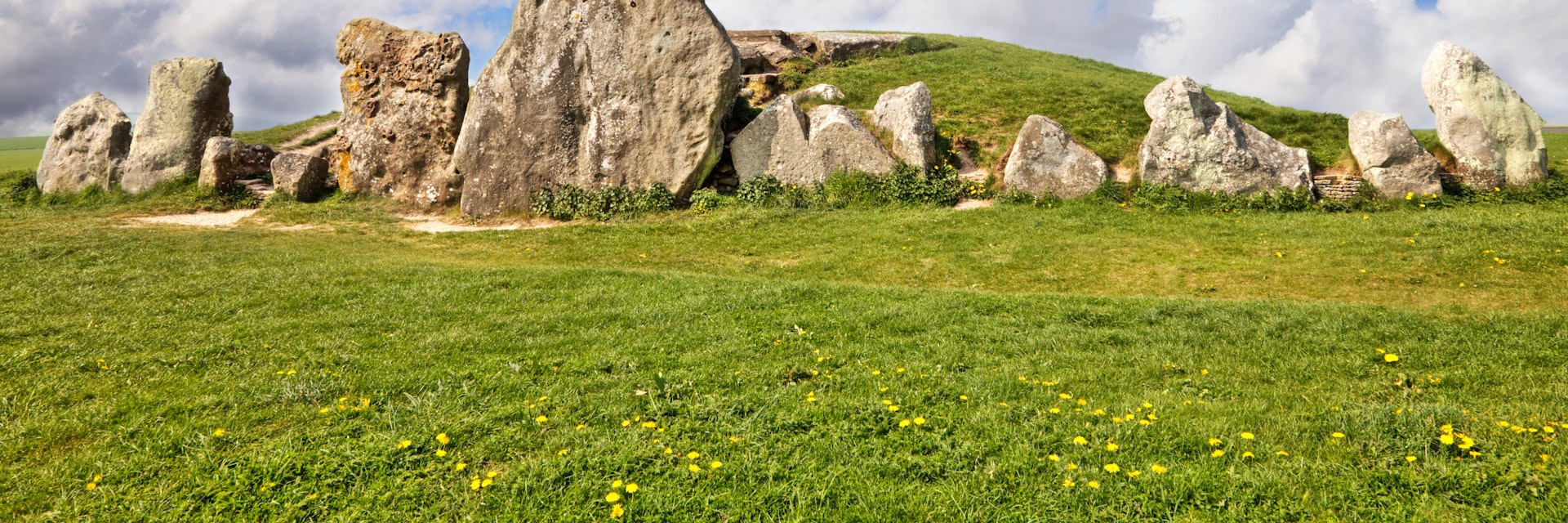With a diameter of 348m, Avebury is the largest stone circle in the world. It's also one of the oldest, dating from 2500 to 2200 BC. Today, more than 30 stones are in place; pillars show where missing stones would have been. Wandering between them emphasises the site's sheer scale, evidenced also by the massive bank and ditch that line the circle; the quieter northwest sector is particularly atmospheric. National Trust–run guided walks (£3) are held on most days.
Avebury henge originally consisted of an outer circle of 98 standing stones of up to 6m in length, many weighing 20 tonnes. The stones were surrounded by another circle delineated by a 5m-high earth bank and a ditch up to 9m deep. Inside were smaller stone circles to the north (27 stones) and south (29 stones).
In the Middle Ages, when Britain's pagan past was an embarrassment to the Church, many of the stones were buried, removed or broken up. In 1934 wealthy businessman and archaeologist Alexander Keiller supervised the re-erection of the stones; he later bought the site for posterity using funds from his family's marmalade fortune.
Modern roads into Avebury neatly dissect the circle into four sectors. Starting at High St near the Henge Shop and walking round the circle in an anticlockwise direction, you'll encounter 11 standing stones in the southwest sector. They include the Barber Surgeon Stone, named after the skeleton of a man found under it – the equipment buried with him suggests he was a barber-cum-surgeon.
The southeast sector starts with huge portal stones marking the entry to the circle from West Kennet Ave. The southern inner circle stood in this sector and within this ring was the obelisk and a group of stones known as the Z Feature. Just outside this smaller circle, only the base of the Ring Stone survives.
In the northern inner circle in the northeast sector, three sarsens remain of what would have been a rectangular cove. The northwest sector has the most complete collection of standing stones, including the massive 65-tonne Swindon Stone, one of the few never to have been toppled.








